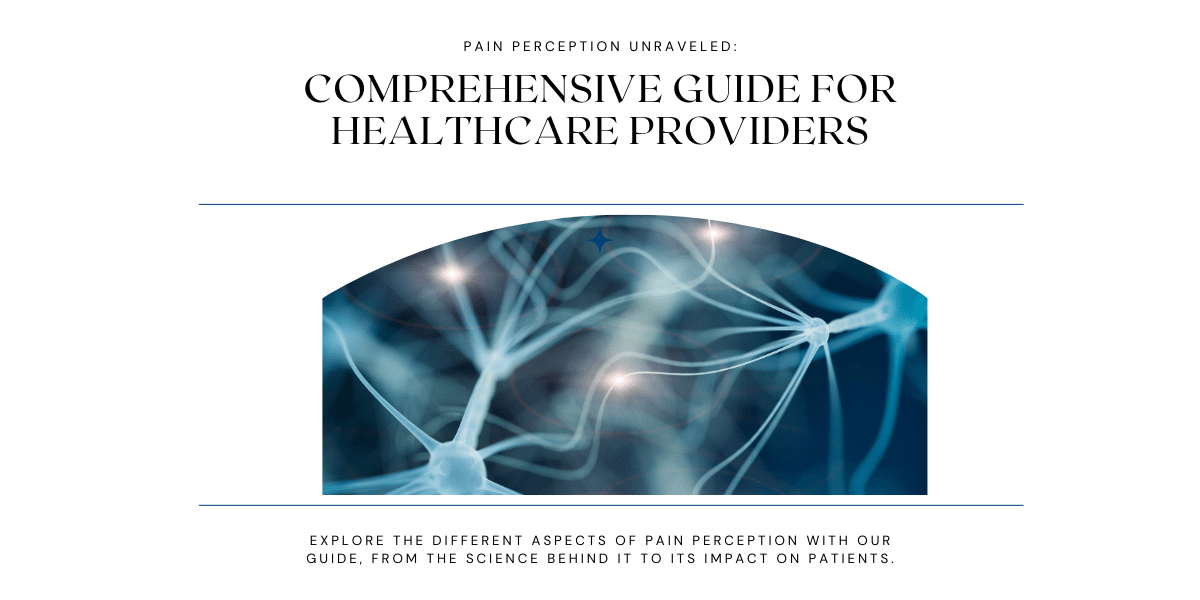Pain Perception Unraveled: A Comprehensive Guide for Healthcare Providers
Understanding Pain Perception: A Deep Dive into Physiology and Compassionate Care
Pain, the body’s alarm system, serves as a vital indicator of potential harm. However, the perception of pain is complex, influenced by various physiological and psychological factors. In the realm of healthcare, understanding the intricate processes behind pain perception is crucial for providing effective and compassionate care. This article delves into the physiological basis of pain perception and explores the strategies healthcare providers employ to manage and alleviate pain in patients, ensuring not only physical relief but also emotional well-being.

The Physiology of Pain Perception:
- Nociception: Pain signals start with nociceptors, specialized sensory neurons, which detect potentially harmful stimuli like heat, pressure, or chemicals.
- Transmission: Pain signals travel to the spinal cord and then to the brain through nerve pathways, where they are interpreted and experienced.
- Brain Processing: The brain processes pain signals in various regions, including the somatosensory cortex and the limbic system, shaping the emotional and sensory aspects of pain.
Factors Influencing Pain Perception:
- Psychological State: Emotions, stress, and anxiety can amplify or mitigate pain perception, highlighting the mind-body connection.
- Cognitive Factors: Personal beliefs, expectations, and cultural backgrounds influence how pain is perceived and tolerated.
- Chronic Pain Pathways: Persistent pain can alter neural pathways, leading to heightened sensitivity and prolonged discomfort.
Compassionate Pain Management Strategies:
- Holistic Assessment: Healthcare providers conduct thorough assessments, considering the patient’s medical history, emotional state, and individual pain tolerance.
- Multimodal Approaches: Integrating medications, physical therapy, acupuncture, and psychological interventions provides comprehensive pain relief.
- Patient Education: Empowering patients with knowledge about their condition and pain management techniques fosters self-efficacy and reduces fear.
- Communication: Open and empathetic communication between healthcare providers and patients ensures that concerns are addressed, enhancing trust and reducing anxiety.
- Mind-Body Techniques: Practices like mindfulness, relaxation, and biofeedback help patients manage pain and reduce its emotional impact.
The Role of Healthcare Providers:
- Empathy and Compassion: Healthcare providers who empathize with patients’ pain experiences create a supportive environment, enhancing the patient’s overall well-being.
- Individualized Care: Tailoring pain management approaches to each patient’s unique needs ensures personalized and effective relief.
- Continuous Assessment: Regularly assessing the efficacy of pain management interventions allows for adjustments, ensuring ongoing comfort and support.
In conclusion, the physiological basis of pain perception is a multifaceted phenomenon, intricately woven with emotional and psychological elements. Healthcare providers, armed with knowledge, empathy, and a holistic approach, play a pivotal role in alleviating pain and enhancing the overall quality of life for their patients. By understanding the complexities of pain perception and employing compassionate care strategies, healthcare professionals can make a significant difference in the lives of those they serve, ensuring not only physical relief but also emotional healing and comfort.




